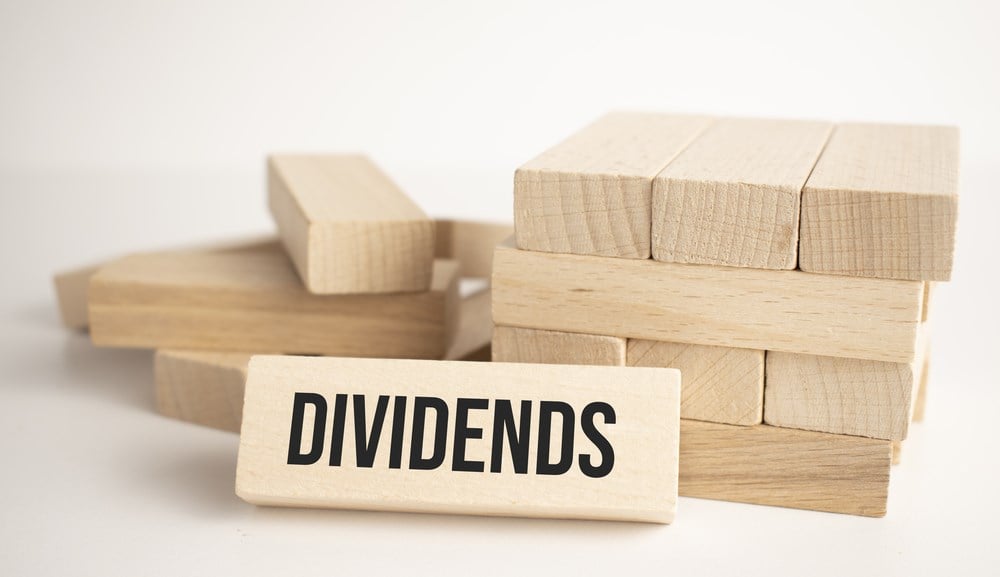
While fast-moving growth stocks are in a slump, investors can still generate a return with dividend stocks.
In some cases, it’s even possible to offset losses elsewhere with dividends: A perfect example is the Utilities Select Sector SPDR Fund (NYSEARCA: XLU), whose price actually declined in 2022, but a healthy dividend yield meant the ETF returned 1.42% last year. Utilities was the only sector other than energy to post a gain in 2022.
These days, with growth having been the rip-roaring asset class in the first half of the year, plenty of high-quality stocks are trading at discounts relative to their value, and many of these offer high dividend yields.
It’s still likely that 2023 will finish with a positive return, given historical data, but returns will likely be more subdued than in the first half of the year. That’s a good reason to include dividend payers in your portfolio.
Here’s a look at five undervalued stocks with healthy yields.
Energy Transfer LP (NYSE: ET)
- Yield: 9.55%
- Annual dividend per share: $1.24
Energy Transfer, an energy transportation specialist, operates an extensive pipeline network for natural gas and crude oil. It also has storage facilities and renewable energy projects.
The company recently said it would buy rival Crestwood Equity Partners for $7.1 billion. Mergers in the fuel infrastructure business are becoming common as it’s increasingly difficult to construct new projects.
The company participated in the broad energy rally last year, despite earnings declining. Analysts see a further drop of 8% this year, before growth resumes in 2023.
As a group, midstream companies are out of favor, with investors potentially concerned about demand for fossil fuels over the longer term, and what that might mean for the industry. For the moment, analysts are still predicting that growth will pick up again, with analysts seeing another boom in the next few years, before a downward trend begins in earnest.
U.S. Bancorp (NYSE: USB)
- Yield: 5.32%
- Annual dividend per share: $1.92
Earlier in August, bond rater Fitch said it was mulling a downgrade of the U.S. banking sector, sending the entire industry lower. U.S. Bank, which is categorized as a super-regional bank, is down 6.72% in the past month, but is finding support near its 50-day moving average. That’s a good sign, indicating that investors are not giving up on the stock, but just reducing their stake. In addition, the stock is trading near $36, holding well above its May low of $27.27.
It’s not just U.S. Bank: As a whole, the banking sector has retreated since the news about a possible downgrade. The SPDR S&P Bank ETF (NYSEARCA: KBE) also appears to have found a floor as investors may be scooping up shares at bargain prices, indicating that they’re not terribly concerned about the possibility of a downgrade.
A downgrade would increase U.S. Bank’s cost of capital in the bond market, but for investors with a longer-term horizon, the yield is worth considering.
Crown Castle (NYSE: CCI)
- Yield: 6.31%
- Annual dividend per share: $6.26
Crown Castle is a real estate investment trust that owns cell towers. The stock’s price began declining in early 2022, and it’s continued to slide. Some analysts say this is a right-sizing of the stock’s valuation, given that cell tower REITs were overvalued for many years.
Indeed, the three-year revenue growth rate is only 9%.
Analysts expect the company to remain profitable, as it has for years, growing earnings by 3% this year, before net income declines by 2% in 2024.
There’s an easy explanation for why Crown Castle’s dividend is so high: Because it’s structured as a REIT, Crown Castle is required by the Internal Revenue Service to distribute at least 90% of taxable income to shareholders in the form of dividends.
This requirement is intended to provide investors with regular income from the real estate properties held within the trust. It also allows REITs to avoid taxation at the corporate level as long as they meet this distribution requirement.
Kraft Heinz Co. (NYSE: KHC)
- Yield: 4.79%
- Annual dividend per share: $1.60
Stocks of companies in the packaged food industry, as a whole have been in decline since May. Kraft Heinz shares have struggled for even longer, posting a year-to-date drop of 16.24% and a one-year drop of 9.14%.
However, this is a defensive stock. You could even make the argument that Mac and Cheese is among the ultimate recession-proof products.
Wall Street sees the company’s earnings growing by 4% this year and another 3% next year, indicating that the selloff may be a bit overdone, at this point.
The company lost market share in a few categories last year, some of that due to supply constraints, but is working on a plan to regain lost ground.
MarketBeat’s Kraft Heinz analyst ratings show a consensus of “hold” with a price target of $42.54, an upside of 27.48%.
AllianceBernstein Holding LP (NYSE: AB)
- Yield: 7.99%
- Annual dividend per share: $2.44
At first glance, not many people get excited about an asset manager’s stock. But that dividend yield is sure to get investors’ attention.
AllianceBernstein’s revenue fell in 2022, which is no surprise, as the market was dropping and the company billed on a smaller total of assets under management. Earnings declined for that reason.
Analysts expect the company to grow earnings only slightly this year, and the company has said its expenses are higher, partially offsetting improvements in the market. Next year, its earnings are expected to grow by 15%.
If analysts are right about the stock’s prospects, now is the time to nab some shares while they may be undervalued. MarketBeat’s AllianceBernstein analyst ratings show a view of “hold,” but the current price target is $42.50, a potential upside of 39.30%.
Right now, the AllianceBernstein chart shows a stock that’s been beaten down, but investors could be rewarded for both buying before the upturn, and for waiting out the earnings improvement.




